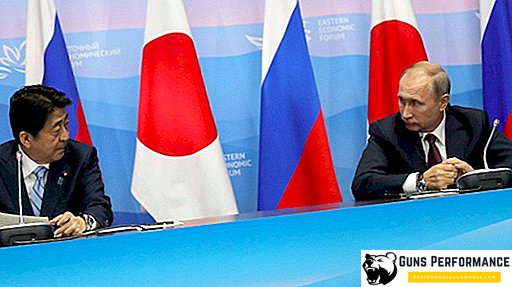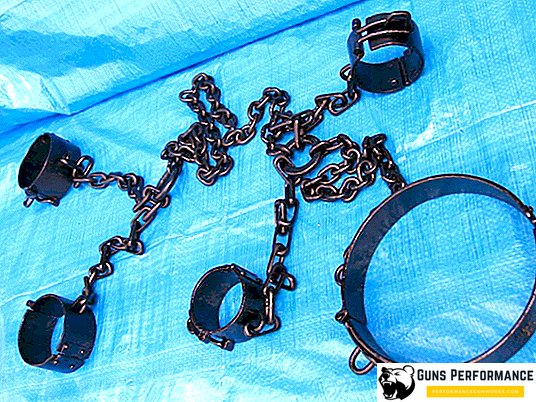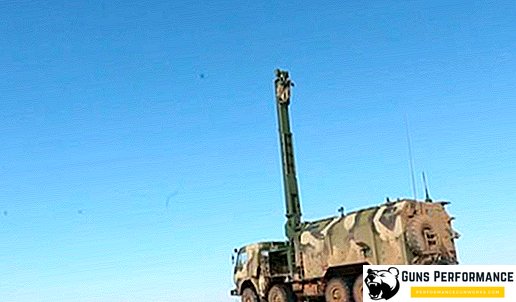The Russian media often make hasty conclusions. For example, having heard the statement of Prime Minister Shinzo Abe, who was discussing the “problem of the Kuril Islands” in the Japanese parliament, they managed to convey to the reader that Japan, which still declared to Stalin (for a moment, April 1941), about his desire to join part of the islands - now from refuses its claims and that the Land of the Rising Sun is supposedly willing to be content with the islands of Habomai and Shikotan and will do anything for the signing of a peace treaty.

East is a tricky business
Meanwhile, the official position of Japan has not changed. The former Asian economic tiger has been in a protracted economic crisis since 1997, and Japan’s foreign debt is almost three times its GDP. Japan is desperate for money. Therefore, the lands of the northern islands (and the adjacent waters with the richest biological resources) are an excellent source of potential income to the state treasury.
Add to this the undoubted foreign policy perspective: the military base deployed in the Kuril Islands will “cover” at least half of the Asian part of the Russian Federation the paths of northern shipping. America will be at least pleased. And under the threat of locating military bases in the Kuril Islands, one can beg out investments from Russia (gratuitously and irrevocably).
An important factor is the fact that Japan is not a sovereign state, because it still lives essentially in the occupation regime. The promise "we will not introduce our troops" can be trusted: the island state doesn’t have its own army, and "we don’t control others."
Good politicians are unpredictable people.
"If you want to stay in power - learn to cheat and dodge." Therefore, according to the Japanese rules of diplomatic etiquette, the interlocutors are often told only what they want to hear. So Shinzo Abe would not have become the Head of the Cabinet of Ministers if he could not influence the voters and foreign colleagues.

Most of the political parties in Japan fully support the basic position of the government regarding the ownership of the four Kuril Islands as the territorial property of Japan. For its part, the Russian Foreign Ministry is working hard on the signing of an exclusively peace treaty, not counting the identity of the island ridge as controversial. And not to face the winner to bargain with the vanquished.
You are guilty from birth ...
According to the provisions of international law, modern Japan is not a successor of the subjectivity of the pre-war state. Claims on islands based on the Portsmouth Treaty of 1905 (which records the outcome of the Russo-Japanese War) are no longer valid. Therefore, negotiations are conducted on the basis of the 1956 Joint Declaration, which takes into account the results of the Second World War and the surrender of Japan.

The process of negotiating a peace treaty is accompanied by unprecedented public pressure. Liberal-minded Russians consider Russia to be guilty of all troubles, and they consider themselves to be elected, albeit second-rate (first of all, Europeans, Americans and Japanese). Forgetting that the foreign "elite" historically grew rich due to the plunder of the colonies, and the territory of Russia was often joined voluntarily, in search of protection from external enemies.
The substitution of concepts, mass propaganda and large gaps in education - and the simple reader agrees with the author: "it is necessary to give, forever Russia offends everyone." As a result, the next morning he wakes up in the belief that Japan always owned the Kuril ridge, and indeed part of the Far East.
Patriotism, pride in the country, respect for the feat of ancestors are replaced by a sense of their own worthlessness and second-rate. So traitors are raised.
The truth in the "kingdom of crooked mirrors"
Although the first reliable information about the Kuril Islands, obtained by the Russians, dates back to 1646, more detailed data was obtained in 1697 after returning from the journey of V. Atlasov from the Kamchatka shores of the Siberian Cossack.
The Kuriles and Sakhalin became the property of the Russian Empire by the discoverer’s right. Indigenous peoples, the Ainu, adopted citizenship, changed their faith to Orthodoxy. In addition to the oral language, the population owned Russian (including writing).
Russian immigrants soon founded villages on the islands of Shumshu, Paramushir, Simushire, Urup and Iturup. Engaged in fishing, mastered the territory and ... fought with the Japanese, when they tried to literally stake out the already developed (and inhabited) land. The enemy from time to time attacked villages, killed and robbed, and then drove in pillars with the hieroglyphs "about the eternal belonging" of these lands of Japan.

The Japanese were not interested in the deserted and cold islands until the Russians appeared:
- their trade routes lay south;
- Predatory campaigns were organized in China.
This is confirmed by the Japanese historian S. Nakamura. In the work "Japanese and Russians", he acknowledged the fact of the discovery of the islands of the Kuril ridge by the Russians, citing Japanese government documents as evidence.
Decrees of the Russian empress, recognized by the international community of the time, declared the Kuril Islands the territorial property of the Russian Empire. According to these historical documents, the island population accepted Russian citizenship with the obligation to pay taxes.
On the basis of the Decree (dated 12.22.1786), the Collegium of Foreign Affairs officially announced the ownership of open lands, including the Kuril Ridge, the Russian Empire. New borders were adopted by all the maritime European powers.
The Japanese themselves also recognize that the Kuril Islands at that time were not part of the border lands. So, in 1792, with instructions from Matsudaira (feudal ruler), the documents stated: "Nemuro (the northern part of Hokkaido) is not Japan." At that time it was a deserted island with undeveloped territory (it became part of Japan only in 1854).
I want what my neighbor
The Japanese began to organize robbery raids on the nearby territories soon after the appearance of the Russians on the northern islands. Japanese documents indicate that in 1798 - 1801. Armed groups tried to expel by force (read "kill" - where can you leave the island?) settlers, put up pillars with the inscriptions "since ancient times belonged to Japan."
The Japanese desire to seize the northern lands did not disappear by the 20th century. We must not forget the atrocities of the Japanese during the intervention of 1918-1922. (Far East). Northern Sakhalin was occupied by Japan until 1925. The scale of this tremendous economic damage has not been reimbursed to Russia so far, just as compensation has not been paid to the relatives of the victims. Japanese soldiers massacred entire villages, leaving no one alive — all they needed was territory and resources.
In April 1941, Matsuoka (Foreign Minister) again raised the issue of gratuitous transfer of northern Sakhalin and the Kuril Islands to Japan. In exchange, Japan promises to facilitate the exit of the USSR to the Indian Ocean - thus offering the Russians to go to war with China and India (the Japanese also liked their territories).

Not satisfied with the refusal of the Soviet side, Japan is waiting for the entire Great Patriotic War. This was facilitated by the negative experience of her collision with a strong opponent:
- Battle of Lake Hassan (1938)
- Battle of Khalkhin-gol (1939)
- non-aggression pact (04/31/1941).
Japan, being an ally of Hitler's Germany, deployed military operations in the Pacific against America, at the same time accumulating forces to strike against the USSR (there was a hidden mobilization, the number of the Kwantung Army doubled).
Given this, at the Yalta Conference, Stalin signs an agreement with the United Kingdom and the United States:
- The USSR stands on the side of the Allies against Japan;
- Soviet Union retreat Sakhalin and the Kuril Islands (those that were previously under the jurisdiction of Japan).
The Soviet-Japanese War (August-September 1945) became a lightning-quick and crushing blitzkrieg led by Marshal Vasilevsky. Three fronts were deployed in the Far East. Military operations were conducted in Manchuria, China and Korea, the Amur and Ussuri rivers were forced. On August 18, 1945, Soviet troops occupied the Kuril Islands, and then liberated the southern part of Sakhalin.
Legally, the Second World War ended on December 12, 1956, when the USSR regained the territories lost as a result of the Russian-Japanese war of 1904-1905.
Japan abandoned its claims on Sakhalin and the Kuriles (while the San Francisco Peace Treaty did not indicate - under whose wing the states will include these territories). Therefore, the USSR signed the Moscow Declaration on the establishment of diplomatic relations and the cessation of hostilities.
Immediately after signing, Japan began to demand the return of all the islands of the South Kuriles in exchange for signing a "real" peace treaty. Unfortunately, this country has lost real sovereignty and is currently being used as loose change in a large hybrid war against Russia and China.












